Table of Contents
The Bolivian flag, also known as the flag of Bolivia, holds a significant place in the nation’s history and culture. With its vibrant colors and meaningful symbolism, it represents the Bolivian identity and heritage. In this article, we will delve into the intriguing aspects of the Bolivia flag, its design, historical background, and the symbolism behind its elements.
The Bolivia flag features three horizontal bands of red, yellow, and green. The red stripe symbolizes the blood shed for freedom and independence, the yellow represents the nation’s mineral resources, and the green stands for the richness of the natural environment. Within the yellow band, when used in official ceremonies, is the Bolivian coat of arms, which carries its own set of deep historical and symbolic meanings.
Bolivia Flag: Colors and Symbolism
- The flag of Bolivia features three horizontal stripes: red at the top, yellow in the middle, and green at the bottom. In the center of the yellow stripe, the Bolivian coat of arms may be featured, depending on the usage.
- The red color symbolizes the bravery, valor, and bloodshed for independence and the sacrifices made by the Bolivian people.
- The yellow color represents the nation’s mineral resources and the wealth of the Bolivian land.
- The green color stands for the fertility, the lush landscapes, and the hope for a prosperous future in Bolivia.
- The coat of arms, when present, contains symbols that reflect various aspects of Bolivia, including its mountains, the sun, and its freedom.
- The flag’s design reflects the nation’s aspirations, cultural heritage, and unity among the Bolivian people.
Flag of Bolivia
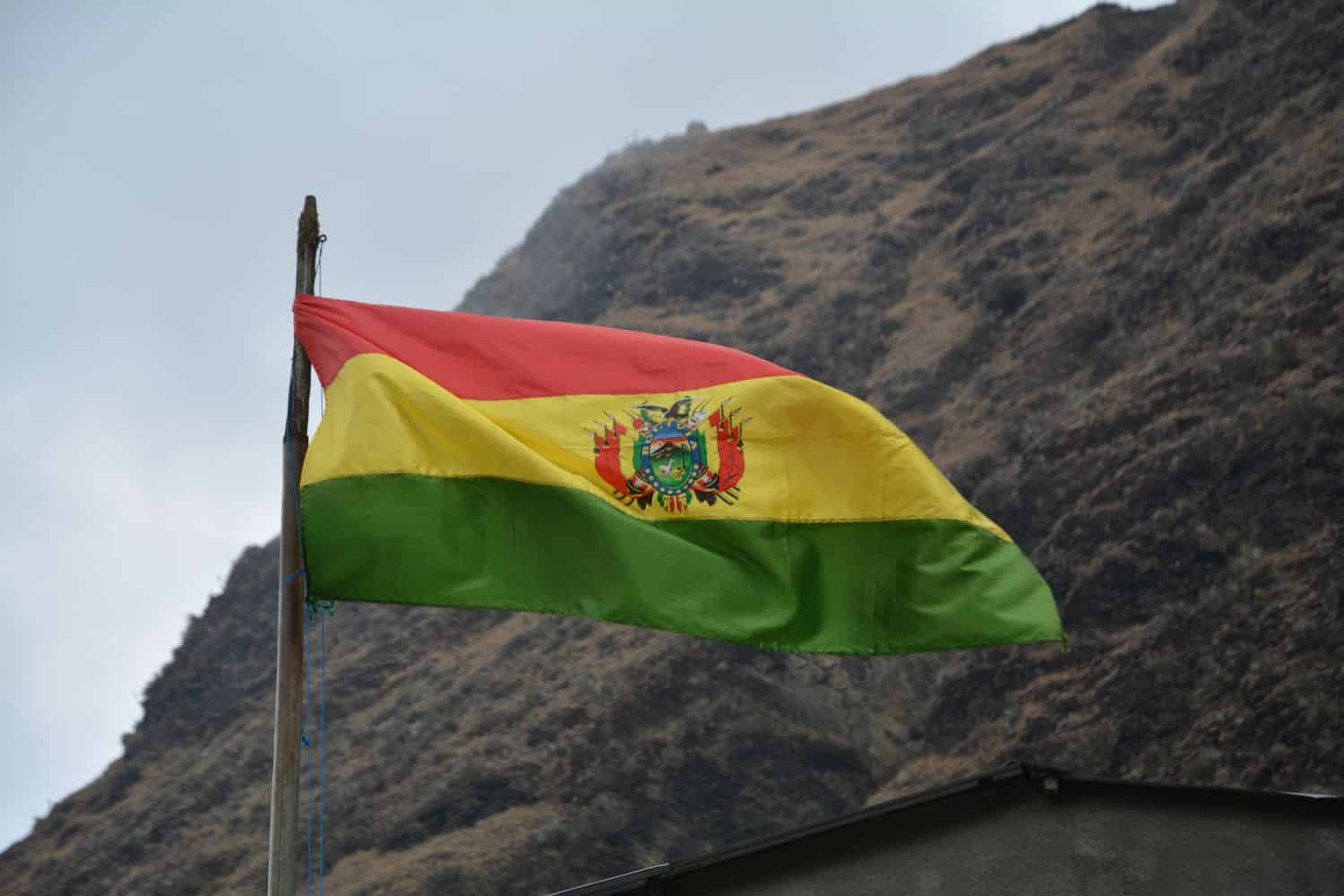
The flag stands as a powerful symbol that encapsulates the cultural significance and spirit of the nation. Its design consists of three horizontal bands: red at the top, yellow in the middle, and green at the bottom. The red color symbolizes the bravery and bloodshed of the Bolivian people throughout history. The yellow represents the nation’s rich mineral resources, and the green embodies the fertility and hope of Bolivia’s landscapes.
The history of the flag is intertwined with Bolivia’s rich heritage and struggle for independence. Adopted on October 31, 1851, the flag represents the unity and aspirations of the Bolivian people.
Beyond its aesthetics, the flag from Bolivia carries deep symbolic meanings. The colors reflect the values and aspirations of the Bolivian people, symbolizing bravery, wealth, and hope. In its coat of arms, which is often featured on the flag, one can see symbols representing independence, the natural riches of Bolivia, and the pride of its people. It embodies Bolivia’s cultural heritage and serves as a reminder of the nation’s resilience and unity.
National Flag Etiquette and Protocol
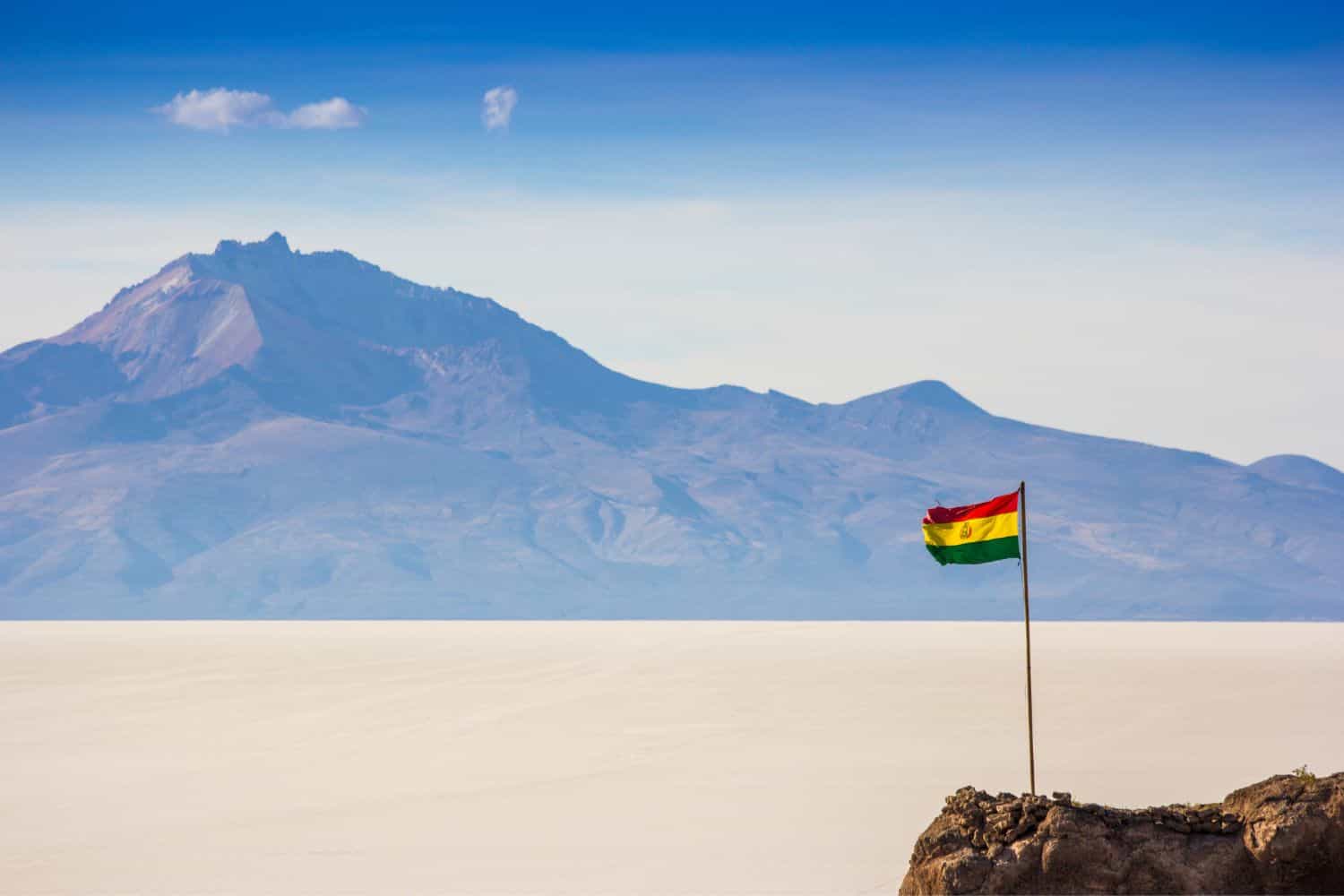
Respecting the proper usage and display of the Bolivian flag is of utmost importance. Understanding flag etiquette is essential, especially during national events and ceremonies. Learn about the protocols governing the handling, hoisting, and lowering of the flag. Discover the appropriate procedures for retiring or handling damaged flags, ensuring they are accorded the respect they deserve.
- Proper Handling: The Bolivian flag should be handled with care and respect, ensuring it is not allowed to touch the ground or floor. It should be held upright and not dragged.
- Hoisting and Lowering: When hoisting the flag, it should be raised briskly and lowered ceremoniously. It is customary to hoist the flag at sunrise and lower it at sunset, although this may vary depending on the occasion or specific guidelines.
- Displaying the Flag: The Bolivian flag should be displayed with the red stripe at the top, followed by the yellow and green stripes. It should be flown freely and not entangled or obstructed.
- Half-Staff: Lowering the flag to half-staff is a gesture of mourning or respect. This should be done on specific days of remembrance or when directed by authorities to honor national tragedies or the passing of significant figures.
- Flag Retirement: When a Bolivian flag becomes damaged, torn, or worn out, it should be retired in a dignified manner. This can involve burning it in a respectful and solemn ceremony, following appropriate guidelines and local regulations.
- Flag Size and Placement: The size of the Bolivian flag displayed should be proportionate to the size of the flagpole or display area. It is recommended to consult local guidelines or authorities for specific rules regarding flag size and placement.
- Respectful Disposal: If a flag cannot be retired through burning, it should be disposed of in a respectful manner. This can involve burying it or handing it over to authorized organizations that specialize in flag disposal.
Interesting Facts and Trivia
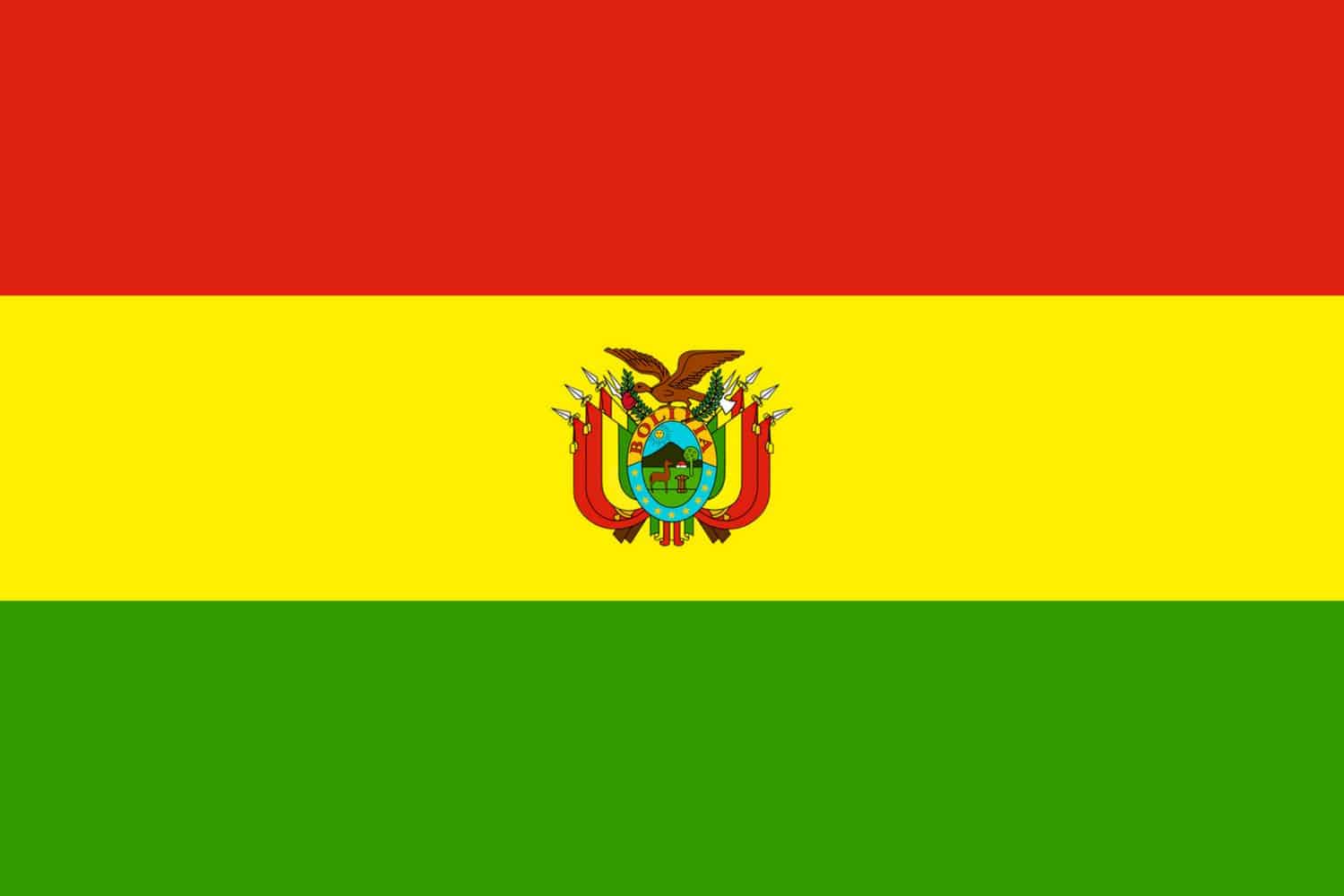
Embark on a journey of captivating facts and lesser-known trivia about the Bolivian flag. Discover unique features within the flag’s design that contain profound symbolism. Uncover stories of notable incidents or events involving the flag that have left a lasting impact on Bolivia’s history and identity.
Rich Tapestry of History
- 1851: The current flag of Bolivia is adopted on October 31, symbolizing the unity and aspirations of the Bolivian people.
- Colors and Symbolism: The red color represents the bravery and the blood shed for freedom and independence, the yellow stands for the country’s mineral resources, and the green symbolizes the richness of the natural environment and hope.
- Wiphala: Bolivia also recognizes the multicolored Wiphala as a dual flag, representing the indigenous peoples of Bolivia and their rich cultural heritage.
- National Identity: The flag embodies Bolivia’s rich history, cultural heritage, and the nation’s ongoing pursuit of unity, prosperity, and renewal.
These historical facts highlight significant moments in the history of the Bolivian flag, showcasing its role in shaping Bolivia’s national identity and symbolizing its struggles and aspirations throughout the years.
Flag-Related Symbols and Emblems
A flag is not alone in representing the nation’s identity. Explore additional national symbols and emblems closely associated with Bolivia, understanding their significance and how they relate to the flag. Delve into their historical and cultural roots, further enriching your understanding of Bolivia’s heritage. It’s easy to travel and make a Bolivia tour to visit the country’s best destinations.
Symbolisms of the Bolivia Flag
The flag of Bolivia carries distinct symbolic elements that encapsulate the nation’s heritage, principles, and dreams. Here are the symbolisms of the Bolivia flag in an itemized manner:
- Red Color: Stands for the bravery and the blood shed by Bolivian heroes in their fight for independence.
- Yellow Color: Symbolizes the nation’s wealth and resources, particularly its rich mineral deposits.
- Green Color: Denotes the fertility and wealth of Bolivian natural resources, particularly its agriculture and landscapes.
- Wiphala: A square emblem, often included next to or within the national flag, representing indigenous cultures and symbolizing their resilience and importance in Bolivian history.
- Flag’s Design: Mirrors Bolivia’s hopes, diverse cultural inheritance, and unity among its people.
- National Identity: The flag acts as a potent symbol that brings together Bolivians, reminding them of their collective past and cultural identity.
- National Aspirations: Through its design and components, the flag encapsulates the ambitions and values of the Bolivian nation, which include courage, wealth, unity, and recognition of its diverse heritage.
These symbolisms in the flag fortify Bolivia’s sense of identity and pride, highlighting its historical progression and cultural importance.
Flags of Similar Countries or Regions
Examining the flags of neighboring countries or regions around Bolivia can provide intriguing insights. Compare and contrast the flags, exploring similarities in design, colors, or symbolism. Uncover historical and cultural connections between flags, shedding light on shared influences or distinctive identities.
Bolivian Flag vs Peruvian Flag
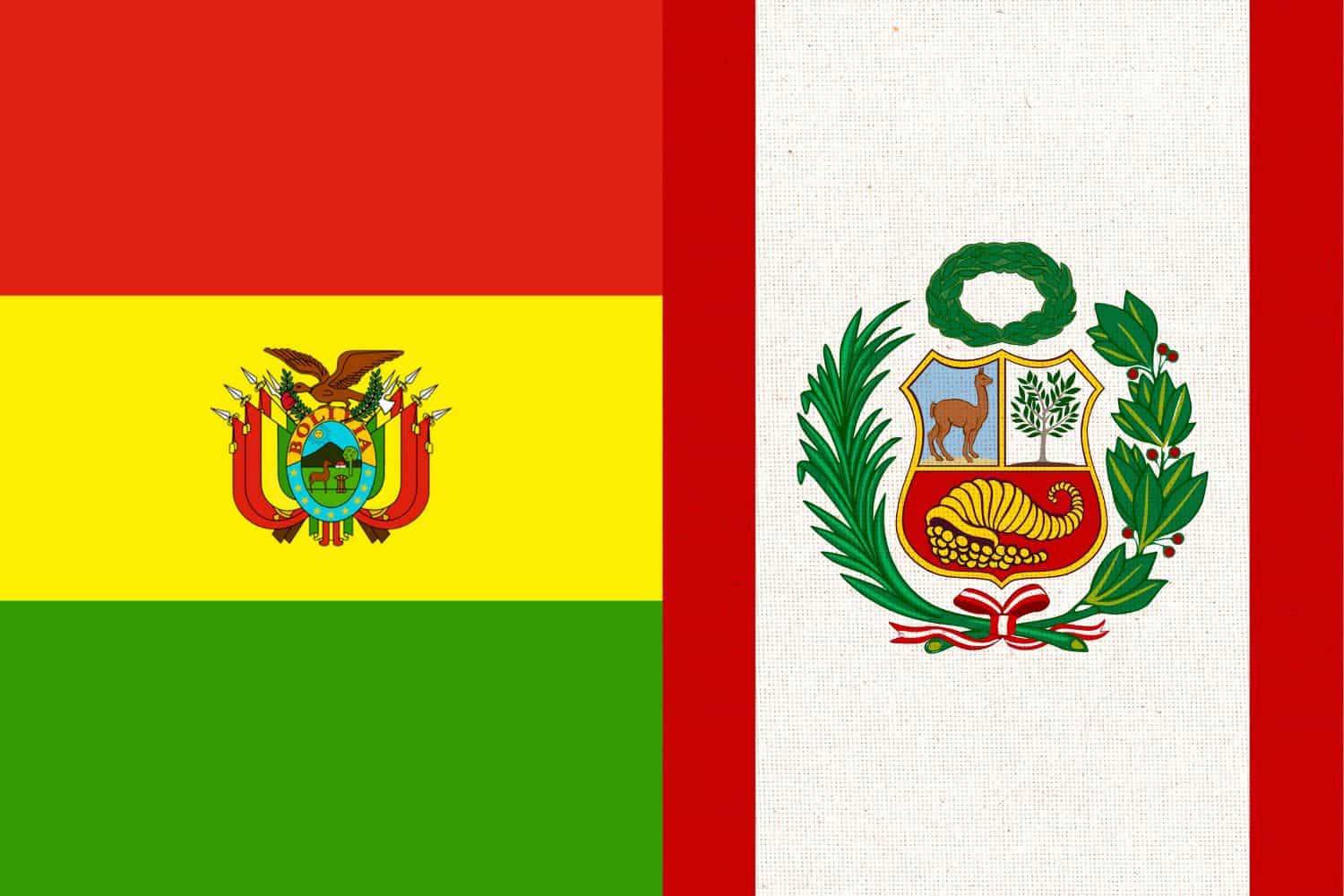
Similarity: Both flags feature red and green colors.
Difference: The Bolivian flag has three horizontal stripes with the colors red, yellow, and green, while the Peruvian flag has two vertical red stripes on either side of a white field.
Bolivian Flag vs Argentine Flag
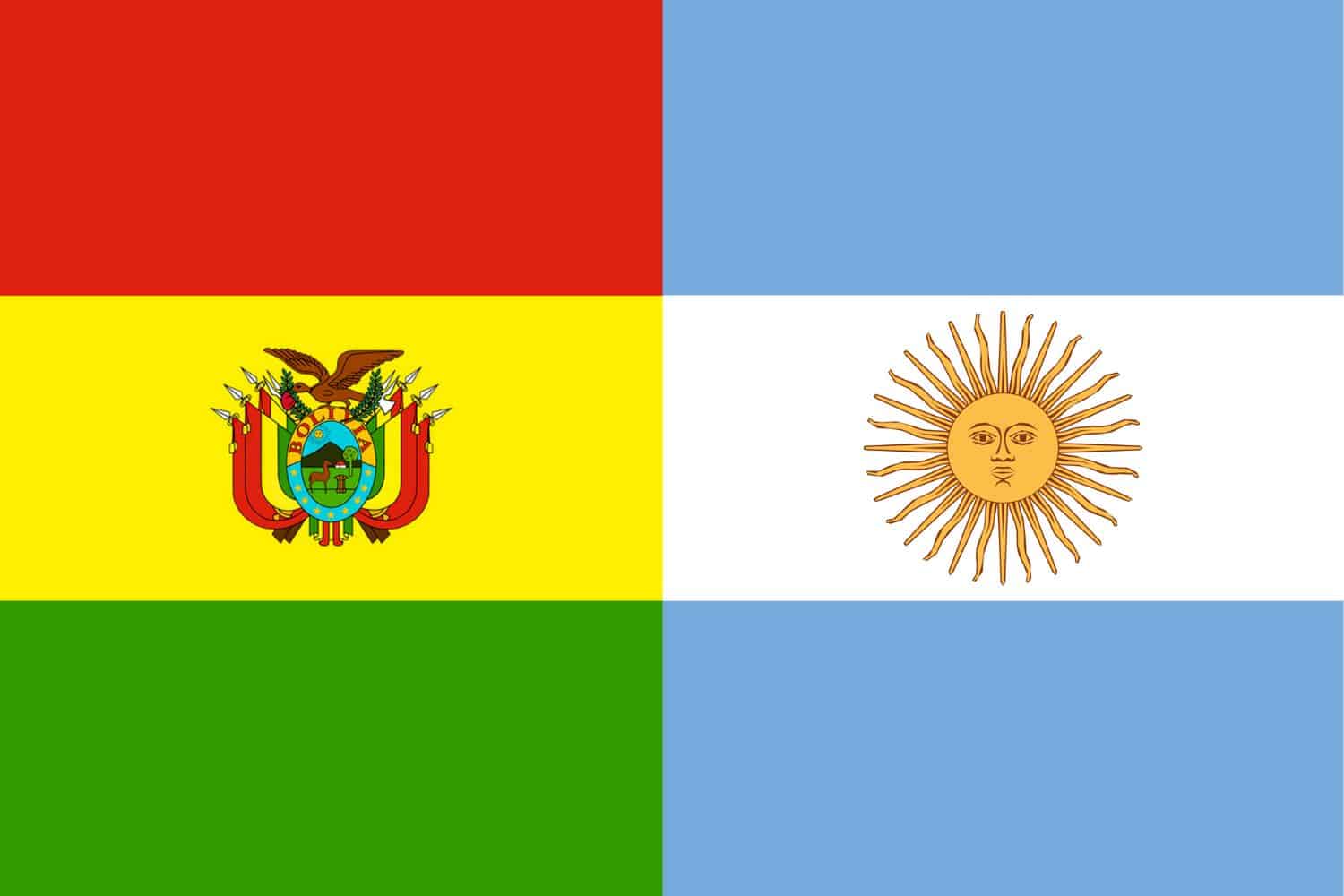
Similarity: Both flags have blue and white colors.
Difference: The Argentine flag consists of three horizontal stripes – two light blue stripes with a white one in the middle, which contains a sun emblem. The Bolivian flag has three horizontal stripes – red, yellow, and green.
Similarity: Both flags feature red and white colors.
Difference: The Chilean flag has a white horizontal stripe on the top and a red one on the bottom, with a blue square on the hoist side containing a white star. The Bolivian flag has three horizontal stripes – red, yellow, and green.
Bolivian Flag vs Brazilian Flag
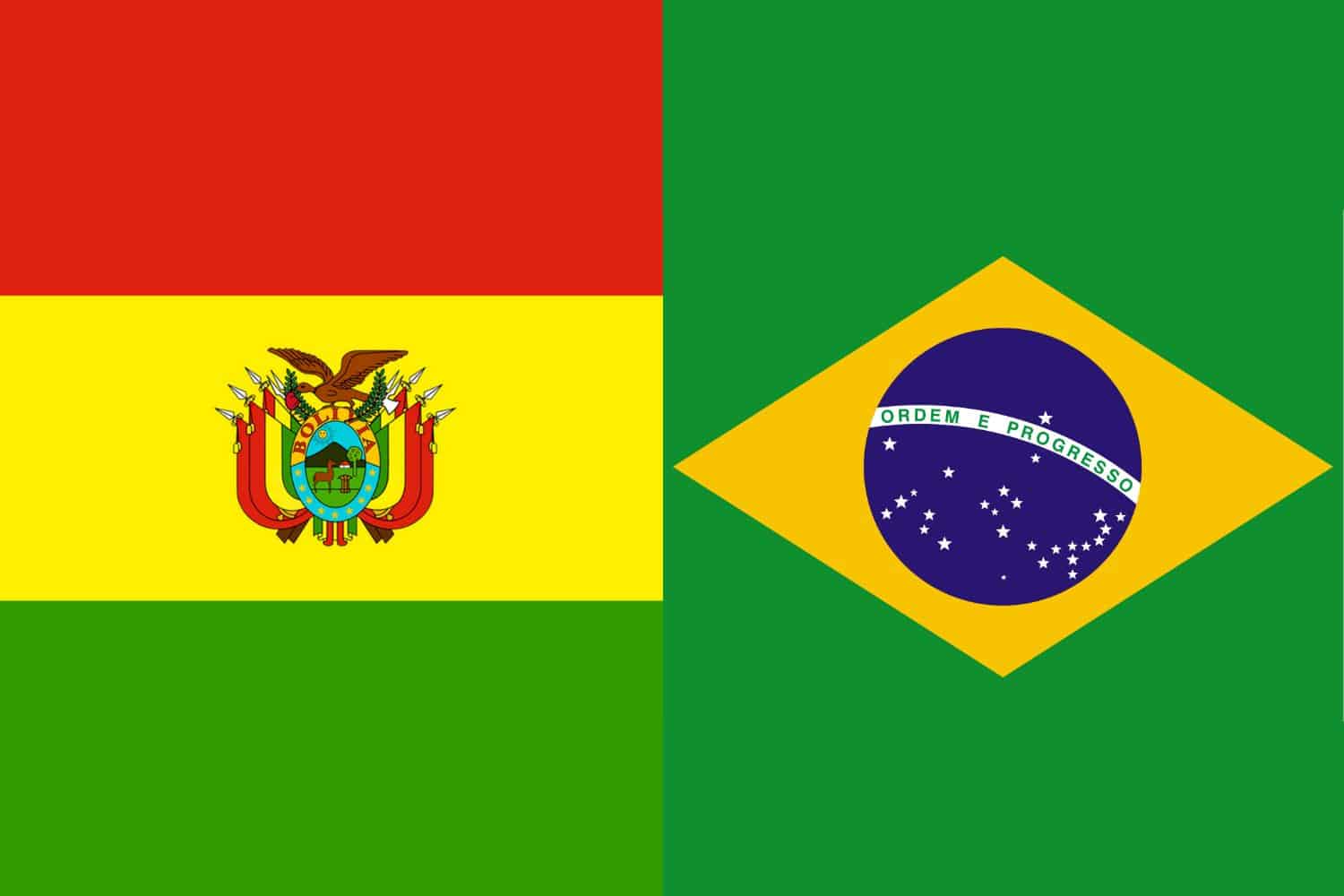
Similarity: Both flags have green and yellow colors.
Difference: The Brazilian flag is a green field with a large yellow diamond in the center, containing a blue circle with 27 small white stars. The Bolivian flag has three horizontal stripes – red, yellow, and green.
Bolivian Flag vs Paraguayan Flag
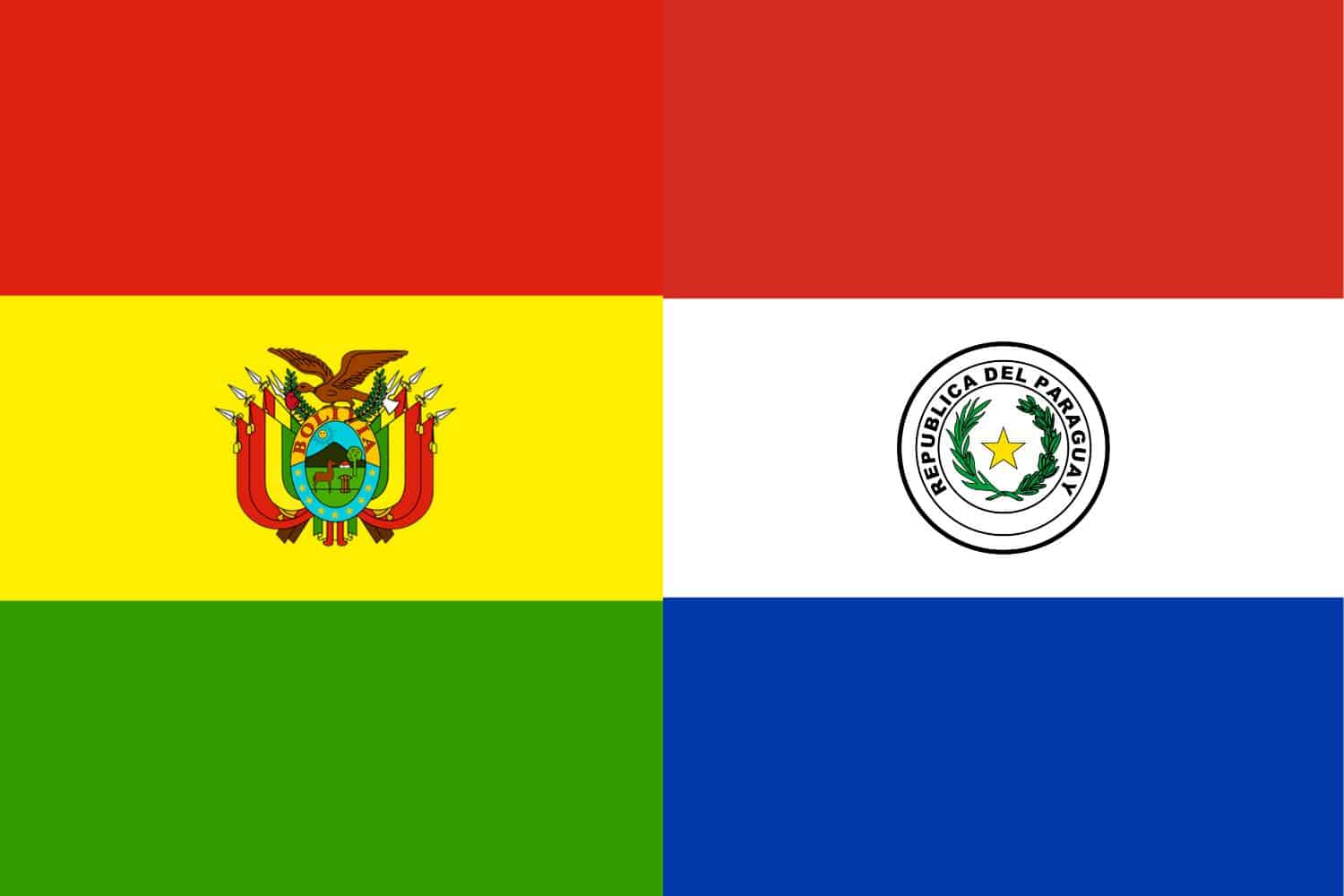
Similarity: Both flags have red, white, and blue colors.
Difference: The Paraguayan flag has three horizontal stripes – red, white, and blue – with a different emblem on each side of the white stripe. The Bolivian flag has three horizontal stripes – red, yellow, and green.
Bolivian Flag vs Uruguayan Flag
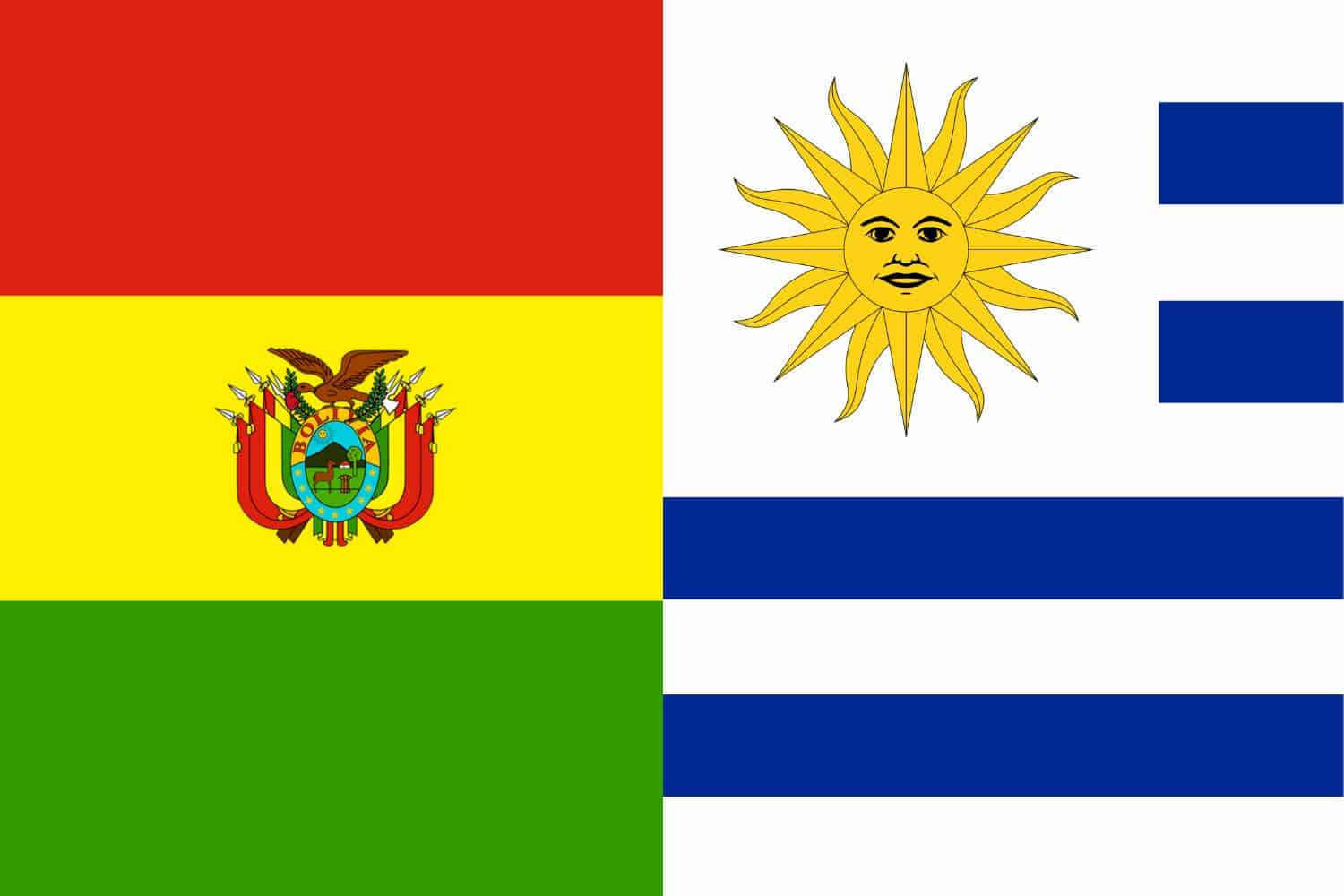
Similarity: Both flags feature stripes.
Difference: The Uruguayan flag consists of nine horizontal stripes of white and blue, with a white square in the upper hoist-side corner containing a yellow sun. The Bolivian flag has three horizontal stripes – red, yellow, and green.
Frequently Asked Questions (FAQs)
Discover answers to common questions related to the Bolivia flag picture. From its historical origins to the symbolism behind its elements, find concise and informative responses that address inquiries commonly posed by those curious about Bolivia’s flag.
What do the colors on the Bolivian flag symbolize?
The Bolivian flag consists of three horizontal stripes. The red represents the bravery and the blood of the national heroes, the yellow symbolizes the nation’s mineral resources, and the green represents the fertility of the land.
Is there any historical significance behind the Bolivian flag’s design?
Yes, the current design of the Bolivian flag has its origins in the early 19th century during the country’s quest for independence from Spanish colonial rule.
What does the Bolivian coat of arms in the middle of the flag represent?
The coat of arms depicts Bolivian geography, history, and culture. It features a mountain (representing the Andes), a llama, a wheat sheaf, a palm tree, and symbols of the country’s mineral wealth.
Are there any religious connotations associated with the Bolivian flag?
The Bolivian flag itself does not have inherent religious connotations. However, Bolivia is a country with a rich tapestry of religious traditions, and the flag symbolizes unity among its diverse people.
How does the Bolivian flag reflect the country’s geographical diversity?
The colors of the Bolivian flag, especially the green, symbolize the diverse landscapes from the Amazon rainforests to the high plains of the Andes mountains.
Has the design of the Bolivian flag changed over time?
Yes, the design of the flag has seen variations, especially with regard to the coat of arms, but the basic tricolor pattern has remained consistent, symbolizing the enduring spirit and pride of the Bolivian people.
Is the Bolivian flag associated with any specific national holidays or celebrations?
Yes, the Bolivian flag is prominently displayed during national holidays such as Independence Day on August 6th, as well as during cultural festivals and sporting events.
Are there any guidelines for the respectful handling and display of the Bolivian flag?
Yes, the flag should be treated with respect, not allowed to touch the ground, and hoisted and lowered with dignity during official ceremonies and events.
Does the Bolivian flag have any similarities to other flags in the region?
While the tricolor design is shared with a number of flags worldwide, the unique placement of colors and the inclusion of the coat of arms makes it distinctly Bolivian.
What does the Bolivian flag symbolize for the Bolivian people?
The flag serves as a symbol of national pride, unity, and the indomitable spirit of the Bolivian people, evoking a sense of belonging and patriotism.
More About Bolivia
[the-post-grid id=”50345″ title=”Bolivia Main page”]
